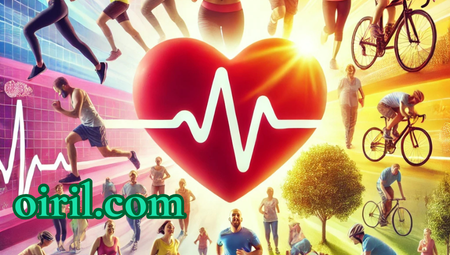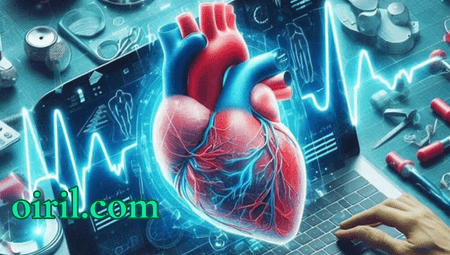Heart Health and Cardio The Role of Regular Exercise in Preventing Cardiovascular Diseases
Cardiovascular diseases encompass a wide range of conditions that affect the heart and blood vessels, including coronary artery disease, hypertension, heart failure, and stroke. The primary culprits for CVDs include poor diet, lack of physical activity, smoking, and stress. These factors contribute to atherosclerosis (plaque buildup in arteries), hypertension, and other conditions that increase the workload on the heart.
Preventing these diseases requires lifestyle modifications, with physical activity playing a pivotal role. Regular cardio exercises help mitigate risk factors by improving heart function, enhancing circulation, and maintaining a healthy weight.
Understanding Cardiovascular Diseases
Cardiovascular diseases encompass a wide range of conditions that affect the heart and blood vessels, including coronary artery disease, hypertension, heart failure, and stroke. The primary culprits for CVDs include poor diet, lack of physical activity, smoking, and stress. These factors contribute to atherosclerosis (plaque buildup in arteries), hypertension, and other conditions that increase the workload on the heart.
Preventing these diseases requires lifestyle modifications, with physical activity playing a pivotal role. Regular cardio exercises help mitigate risk factors by improving heart function, enhancing circulation, and maintaining a healthy weight.
The Science Behind Cardio and Heart Health
Cardio exercise, also known as aerobic exercise, involves sustained physical activity that increases the heart rate and breathing. Examples include walking, running, swimming, cycling, and dancing. The health benefits of these activities are rooted in their ability to strengthen the cardiovascular system.
Improves Heart Efficiency:
Cardio exercises condition the heart to pump blood more efficiently. During aerobic activity, the heart works harder to circulate oxygen-rich blood to muscles. Over time, this improves the heart’s stroke volume (the amount of blood pumped per beat), reducing resting heart rate and overall cardiac workload.
Enhances Blood Circulation:
Aerobic exercise promotes the growth of new blood vessels, a process known as angiogenesis. This improves blood flow to vital organs and muscles, reducing the risk of ischemia (restricted blood supply).
Reduces Blood Pressure:
Regular cardio helps lower both systolic and diastolic blood pressure by improving arterial flexibility and reducing vascular resistance. This is particularly beneficial for individuals with hypertension, a major risk factor for heart attacks and strokes.
Improves Lipid Profile:
Cardio exercises boost levels of high-density lipoprotein (HDL or “good cholesterol”) while lowering low-density lipoprotein (LDL or “bad cholesterol”) and triglycerides. A healthier lipid profile reduces the risk of plaque formation in arteries.
Regulates Blood Sugar:
Physical activity enhances insulin sensitivity, allowing cells to use glucose more effectively. This reduces the risk of diabetes, a condition closely linked to cardiovascular diseases.
Reduces Inflammation:
Chronic inflammation is a key contributor to CVDs. Cardio exercises have been shown to decrease levels of inflammatory markers, promoting vascular health.
Cardio Exercises and Specific Cardiovascular Conditions
Coronary Artery Disease (CAD):
CAD occurs due to the narrowing of coronary arteries, leading to reduced blood flow to the heart. Cardio exercises enhance oxygen delivery and improve the heart’s ability to function despite partial blockages.
Hypertension:
Aerobic activities are effective in managing high blood pressure. Activities such as brisk walking, cycling, or swimming for 30–40 minutes daily can result in significant reductions in blood pressure levels.
Heart Failure:
While traditionally viewed as a contraindication for exercise, moderate-intensity cardio under medical supervision can improve heart function in individuals with heart failure.
Stroke Prevention:
Cardio exercises reduce the risk of stroke by lowering blood pressure, reducing LDL cholesterol, and improving overall vascular health.
How Much Cardio Do You Need?
The American Heart Association (AHA) recommends:
- 150 minutes of moderate-intensity aerobic exercise per week (e.g., brisk walking, dancing).
- 75 minutes of vigorous-intensity aerobic exercise per week (e.g., running, cycling).
- A combination of both for maximum benefit.
For additional health gains, doubling the weekly activity (e.g., 300 minutes of moderate exercise) is encouraged.
Incorporating Cardio Into Daily Life
Integrating cardio into your lifestyle doesn’t require a gym membership or extensive planning. Here are practical tips:
Start Small:
If you’re new to exercise, begin with short sessions, such as a 10-minute walk, and gradually increase the duration and intensity.
Make it Fun:
Choose activities you enjoy, like dancing, hiking, or swimming. Enjoyable activities are easier to sustain over the long term.
Use Technology:
Fitness trackers and smartphone apps can help you monitor progress, set goals, and stay motivated.
Include Interval Training:
High-Intensity Interval Training (HIIT), which alternates between intense bursts of activity and rest, is a time-efficient way to gain cardio benefits.
Combine with Daily Tasks:
Incorporate cardio into daily routines, such as walking to work, taking the stairs instead of the elevator, or playing active games with children.
Barriers to Cardio and How to Overcome Them
Despite its benefits, many people struggle to maintain regular cardio due to:
Lack of Time:
Solution: Short, high-intensity sessions like HIIT can be effective in just 20 minutes.
Physical Limitations:
Solution: Low-impact activities like swimming or cycling are gentle on joints and suitable for most people.
Motivation Issues:
Solution: Exercise with a friend, join a class, or set achievable goals to stay committed.
Recent Advances in Cardio Research
The field of cardiovascular exercise is continually evolving, with recent studies shedding light on new benefits and approaches:
- Wearable Technology: Devices like smartwatches now provide real-time data on heart rate, activity levels, and even arrhythmia detection, making cardio safer and more personalized.
- Virtual Fitness Platforms: Online classes and virtual trainers have made cardio workouts accessible to more people.
- Genetics and Exercise: Research into “exercise genomics” explores how individual genetic profiles influence responses to aerobic activity, paving the way for personalized fitness plans.
- Mental Health and Cardio: Studies highlight the link between cardio and reduced risks of depression and anxiety, showcasing its dual benefits for heart and mind.
Regular cardio exercise is a powerful tool for preventing cardiovascular diseases and improving overall health. By strengthening the heart, enhancing circulation, and addressing key risk factors, aerobic activities can significantly reduce the burden of CVDs. While challenges like time constraints or physical limitations exist, flexible and creative approaches can help integrate cardio into daily life. With ongoing research and innovations, the role of cardio in promoting heart health will only grow stronger, empowering individuals to lead longer, healthier lives.





